Notre site dispose désormais d'un mode éco. N'hésitez pas à l'essayer !
Increasingly, Google provides complete answers in its search results, reducing organic clicks. The SEO world must adapt to this growing trend.
With the constant evolution of search algorithms and ever-growing user expectations, the SEO landscape has experienced many upheavals in recent years. One of the most notable trends is the rise of zero-click searches, where users find instant answers to their queries directly on the search results page without needing to click a link to visit a website.
While this phenomenon benefits user experience, it presents a significant challenge for businesses and digital marketers. If users get the information they need without leaving the search page, how can companies continue to capture traffic and engage their audience?
In this article, we will delve into the implications of the zero-click search revolution and why it is gaining popularity. We will also examine the different strategies businesses can adopt to optimize their content and maximize their visibility in this new environment. From creating informative and concise content to using structured data, we will provide the necessary tools to navigate this constantly evolving landscape effectively.
The rise of zero-click searches is accompanied by the diversification of result formats offered by search engines. These formats allow users to get immediate answers to their questions without leaving the results page. Here are some of the most common types of zero-click results:
Featured Snippets
Featured snippets are information blocks that appear at the top of the search results page. They provide a concise answer to the user's query and can be in the form of paragraphs, lists, tables, or videos. For example, if a user searches for "how to connect to a wifi network," a featured snippet might display a list of steps directly in the search results.
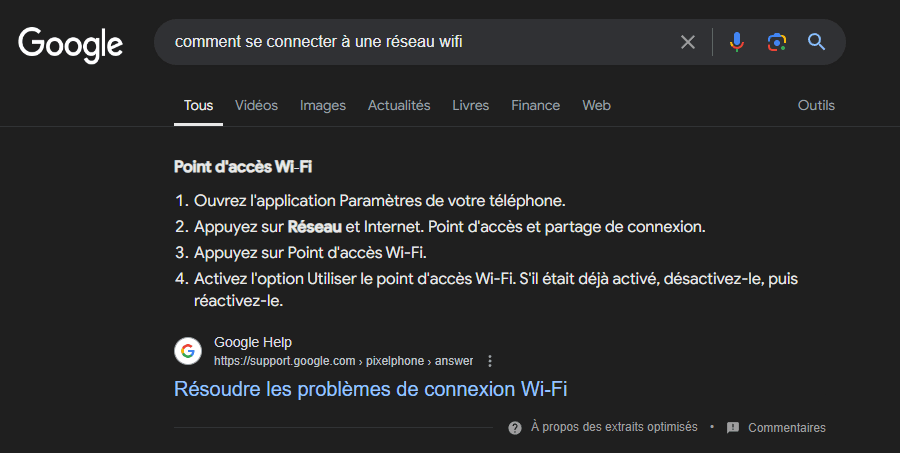
Knowledge Panels
Knowledge panels typically appear on the right side of the search results and provide comprehensive information about a person, place, organization, or thing. These panels are powered by Google's database and other reliable sources, mainly Wikipedia. For instance, a search for "Albert Einstein" will trigger a knowledge panel with details about his biography, scientific discoveries, and images.
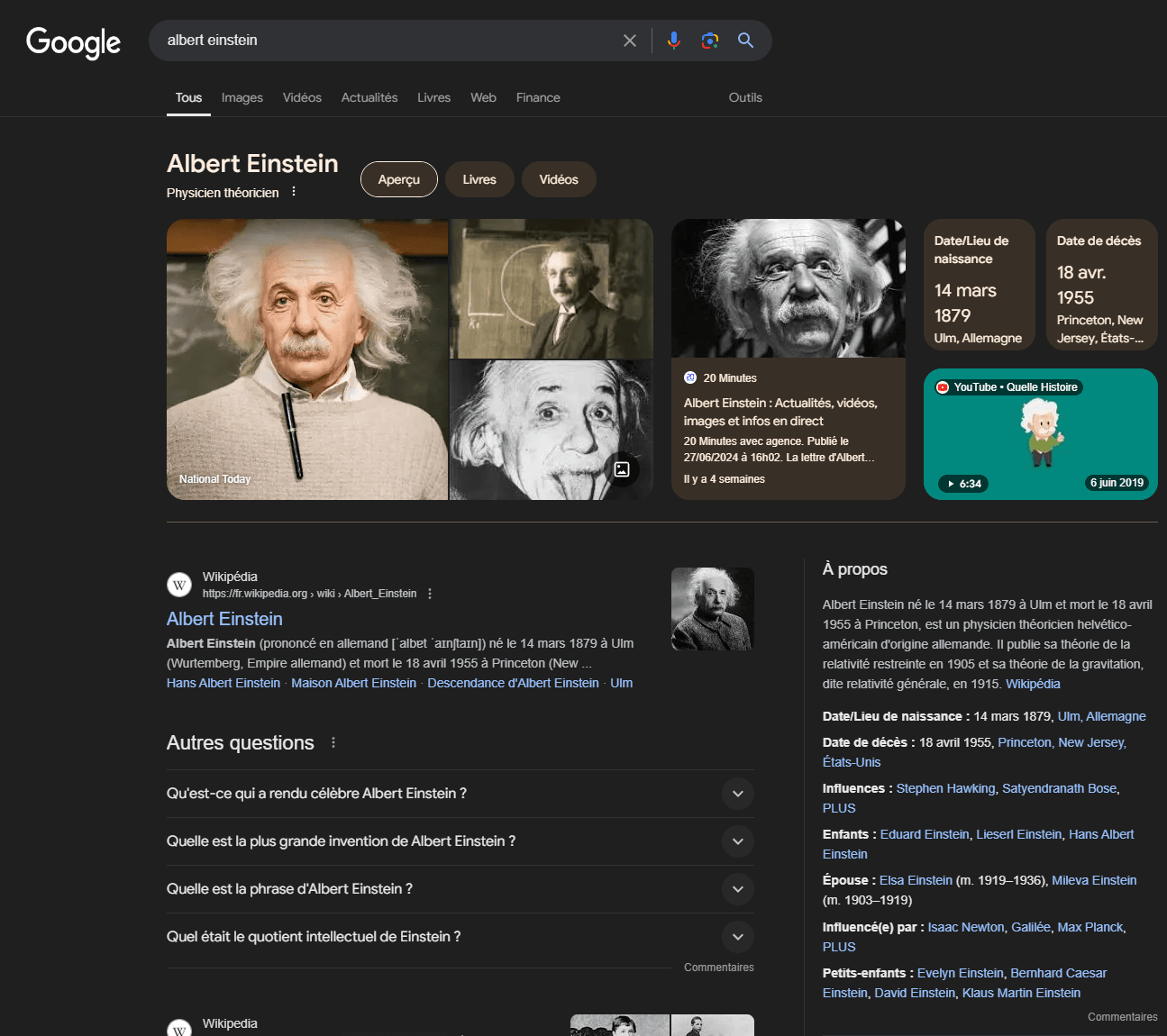
Direct Answers
Direct answers are instant responses to simple questions, often displayed at the top of the search results. These answers can include currency conversions, sports scores, weather, or definitions. For example, a search for "what is the capital of Luxembourg" will immediately return the answer at the top of the page.
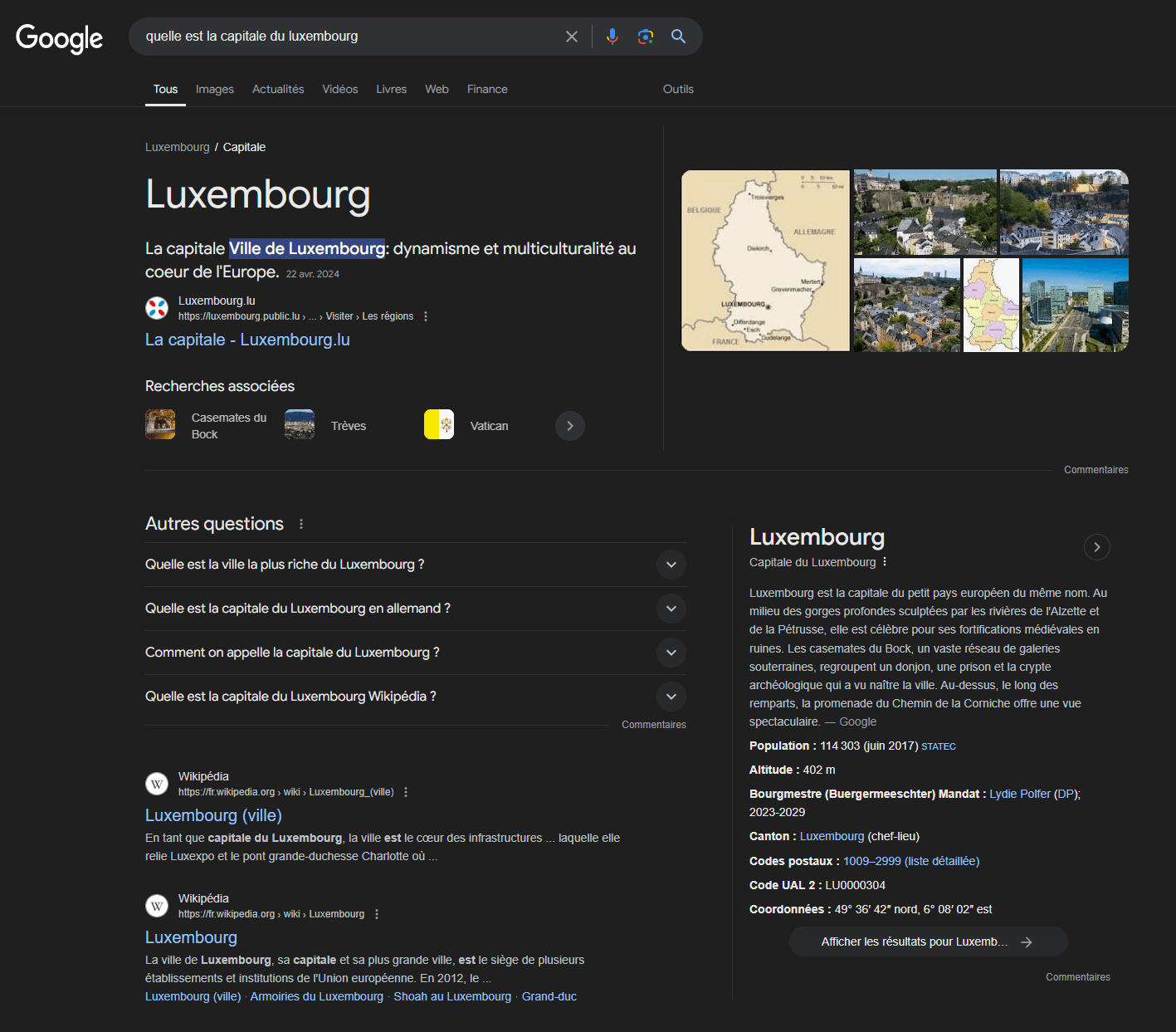
Other Formats
Besides the formats mentioned above, there are other types of zero-click results that provide detailed information without requiring a click. For example:

The popularity of zero-click searches is constantly increasing. According to a study by SparkToro, about 65% of searches on Google end without a click on a link. In other words, the majority of users find the information they need directly on the search results page. (Source: Search Engine Land)
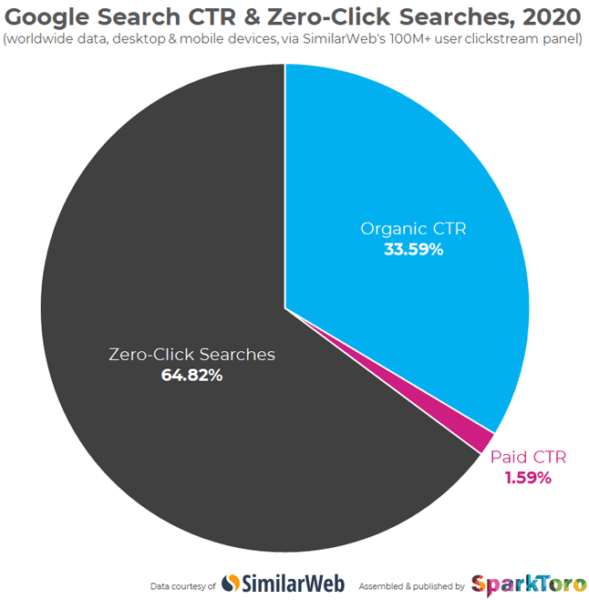
In 2020, another study by Jumpshot and Rand Fishkin revealed that 50.33% of searches on Google resulted in zero-click outcomes. This trend is largely attributed to the improvement of Google's algorithms and the introduction of new search result formats that directly address user queries.
Understanding this evolution is crucial for businesses, as it means that simply achieving a high ranking in search results is no longer enough to guarantee traffic to their website. It is now vital to optimize content for these zero-click formats to maintain and increase online visibility.
The challenge is now to ensure that your content is picked up by Google in its featured snippets and benefits from the associated visibility boost. Here are some tips for optimizing your content:
Google prioritizes clear and concise answers. Ensure your content directly addresses users' questions. Use simple sentences and avoid technical jargon.
Example: For a query like "how to plant tomatoes," an effective featured snippet might be: "To plant tomatoes, start by preparing the soil with compost. Plant the seeds 1 cm deep and water regularly."
Numbered and bulleted lists are particularly effective for appearing in featured snippets, especially for "how-to" or step-by-step queries.
Example: For the query "steps to change a tire," a detailed numbered list outlining each step is more likely to be selected as a featured snippet.
Proper use of HTML tags to structure your content helps Google understand the hierarchy and relevance of the information. Use H2 and H3 tags for subtitles and ensure each section is clearly defined.
Structured data, or "schema markup," are codes added to your pages' HTML to help search engines better understand and index your content. They play a key role in getting your site featured in zero-click results by allowing indexing robots to better comprehend your content, thus increasing your chances of appearing in zero-click results.
Sites using structured data see a 20-30% increase in click-through rates. (Source: Google Developers)
To optimize your content for featured snippets, it is crucial to understand the questions users frequently ask, the content easily integrable into a snippet, and the topics to prioritize. With keyword management tools like Ahrefs, Semrush, or Google Keyword Planner, you can identify these questions and associated keywords.
Note that only 12.3% of search results contain featured snippets. (Source: Ahref - Ahrefs). Only the broadest topics and the most frequently asked questions will trigger a snippet.
To optimize your content for zero-click searches, it is essential to provide direct and succinct answers to users' questions. This means providing clear and precise answers at the beginning of your content.
Example: For a query like "how to plant tomatoes," start your article with a concise answer: "To plant tomatoes, start by preparing the soil with compost. Plant the seeds 1 cm deep and water regularly."
Regularly updating your content is crucial to staying relevant and maintaining your position in zero-click results. Information must be up-to-date and reflect the latest trends and data.
Example: An article on SEO best practices should be revised regularly to include the latest Google algorithm updates.
Some content formats are particularly effective for appearing in zero-click results:
Example: An FAQ page on a health site could answer questions like "How to improve SEO?" using structured data to appear directly in search results.
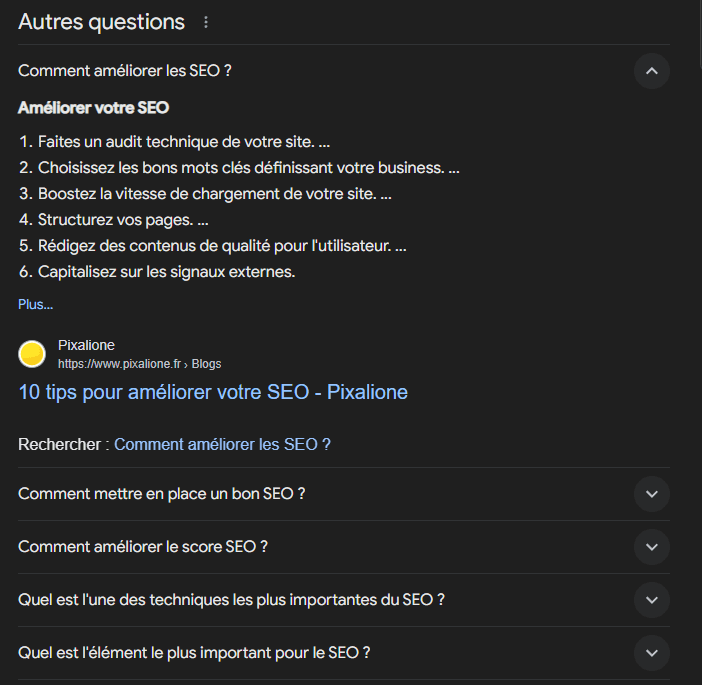
For many years, digital marketing had the undeniable advantage of being particularly measurable. This paradigm is changing, and we are moving towards a world where optimizing our investments will become more challenging as attribution becomes impossible.
Many specialists are already talking about a regression where the difficulty of measuring and attributing conversions will be akin to traditional channels like television or radio.
Zero-click search also brings advantages to leverage, including a significant one: the credibility of results. Zero-click results are presented as a truth, an undeniable answer to the question asked, allowing cited brands to benefit from great visibility and credibility in users' eyes.
Some brands quickly understood this principle. For example, Decathlon, as shown above, takes advantage of this new consumption trend to become visible and increase its brand equity. Even if this impression will not generate any clicks, it will indirectly contribute to Decathlon's success.
Analytical Tools With the rise of zero-click searches, it is essential to revisit traditional performance indicators to evaluate the success of your SEO efforts. Here are some alternative indicators to consider:
Impression Rate: The number of times your content appears in search results, regardless of clicks. Share of Voice in Featured Snippets: The frequency with which your content is selected for featured snippets compared to your competitors. To track and analyze these new indicators, several tools are available:
Google Search Console: Search Console provides detailed data on impressions, clicks, and positions in search results, and it also allows you to count the number of appearances in featured snippets. You can also deduce which keywords generate featured snippet appearances by looking at those with a low CTR despite high impressions and a very low average position. This might indicate that your result appears as a snippet. Semrush: Semrush offers advanced features to analyze featured snippets and monitor your competitors' performance. You can see which snippets your competitors dominate and adjust your strategies accordingly.
